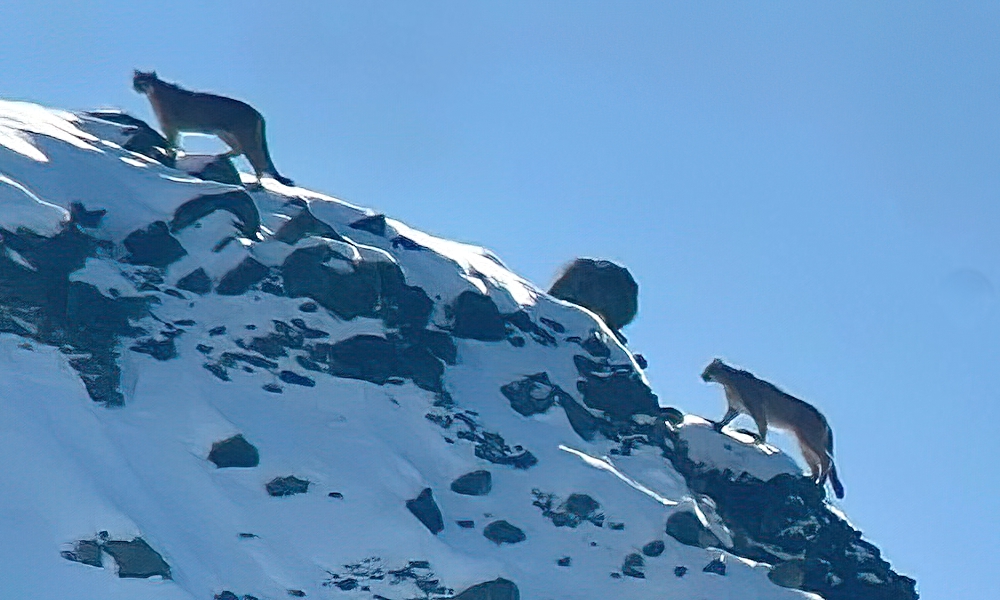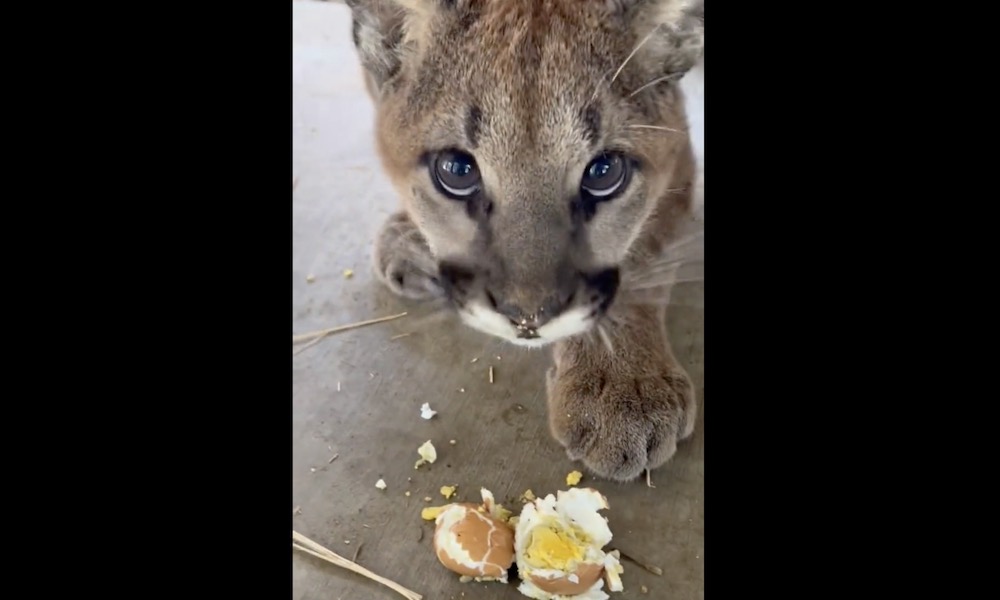A guide in Yellowstone National Park last week captured footage of rarely seen cougars traversing a snow-covered ridge as if out for a Sunday stroll.
MacNeil Lyons of Yellowstone Insight told FTW Outdoors that he was leading a photography tour with a guest from the U.K., who was “extremely excited” to observe cougars for the first time.
Understandable, considering that most visitors to Yellowstone do not see cougars, or mountain lions. Although the park is home to perhaps a few dozen of the large wildcats, they’re famously stealthy and elusive.
Lyons shared the accompanying footage via Instagram, writing:
“High in elevation, between craggy peaks these two sauntered on the ridge line with a backlit ‘bluebird’ sky! As the lions went out of view from one vantage point, I read the landscape and moved a few miles down the road to try a different vantage point.
RELATED: Yellowstone bison stampede toward snow coach in thrilling encounter
“Our luck continued as we picked them up as one sat and peered over the edge of large snow cornices. We had our time with them for at least 20 minutes.”
Lyons told FTW Outdoors that he captured the footage in the northern range from more than a mile away, with an iPhone attached to a Swarovski spotting scope.
He said the cougars might be the same pair – perhaps a courting pair, or a mom with a subadult offspring – that was spotted recently on a ridge hunting mountain goats.
https://www.instagram.com/reel/DFZPuDixW3Q/
According to the park, cougars are native to the Greater Yellowstone Ecosystem but were nearly eradicated throughout the Lower 48 states during predator-removal campaigns in the early 1900s.
They survived in the West largely because of their preference for remote, rugged habitat, and their elusive nature.
Lyons, who has documented an astonishing 37 cougar sightings in 25 years of living in Montana, expressed concern for the future of the park and surrounding region in light of new or proposed laws that could jeopardize wildlife.
He concluded his Instagram post:
“We need these Wild Places. But more importantly the entire 4-legged, feathered and scaled community needs this wild space. Pay attention to new state & federal laws that lessen the protection of our Public Lands.
“Times are changing and seemingly not to the benefit of those without a voice… the animal community. Be their voice for protection and ethical stewardship of these wild spaces.
“Thank you to all that are keeping up the Good Fight.”





 : Keeper Marisa
: Keeper Marisa 











